Attached: The New Science of Adult Attachment and How It Can Help YouFind – and Keep – Love
ISBN-10: 1585429139
ISBN-13 : 978-1585429134
Publisher : TarcherPerigee; Reprint edition (January 5, 2012)
Language : English
Paperback: 304 pages
Reading Age : None
Dimensions : 6 x 0.8 x 9 inches
Item Weight : 12.2 ounces
$17.13 $13.70
“Over a decade after its publication, one book on dating has people firmly in its grip.” — The New York Times We already rely on science to tell us what to eat, when to exercise, and how long to sleep. Why not use science to help us improve our relationships? In this revolutionary book, psychiatrist and neuroscientist Dr. Amir Levine and Rachel Heller scientifically explain why why some people seem to navigate relationships effortlessly, while others struggle. Discover how an understanding of adult attachment—the most advanced relationship science in existence today—can help us find and sustain love. Pioneered by psychologist John Bowlby in the 1950s, the field of attachment posits that each of us behaves in relationships in one of three distinct ways: • Anxious people are often preoccupied with their relationships and tend to worry about their partner’s ability to love them back • Avoidant people equate intimacy with a loss of independence and constantly try to minimize closeness. • Secure people feel comfortable with intimacy and are usually warm and loving. Attached guides readers in determining what attachment style they and their mate (or potential mate) follow, offering a road map for building stronger, more fulfilling connections with the people they love.



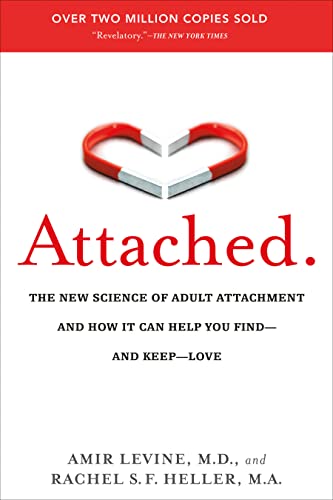
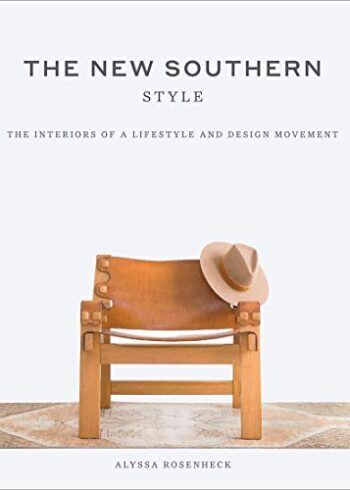



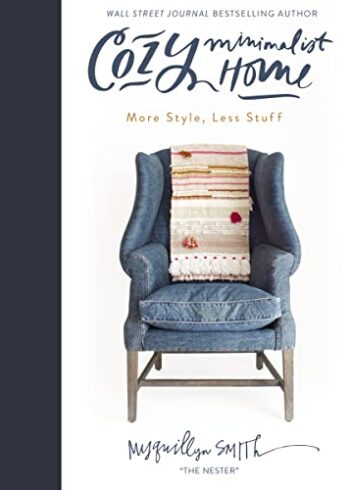
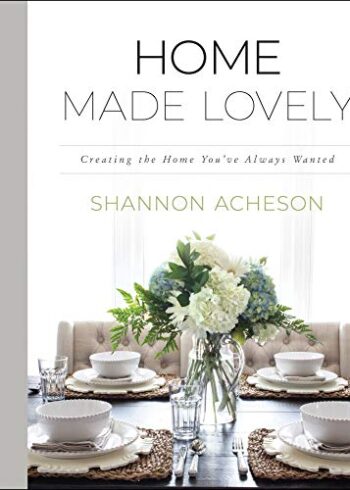
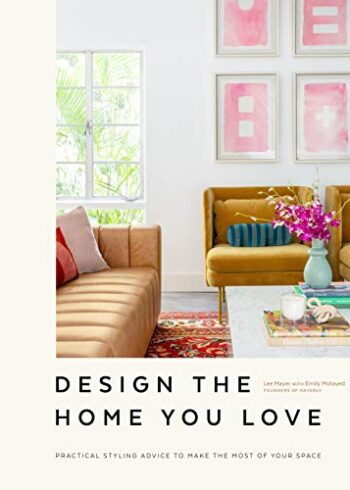



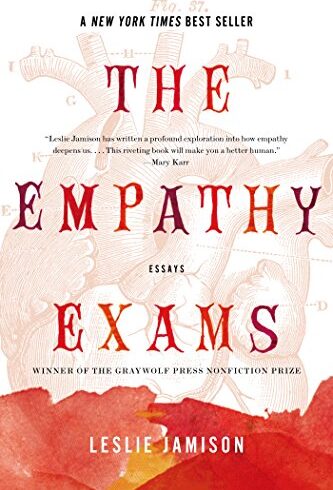
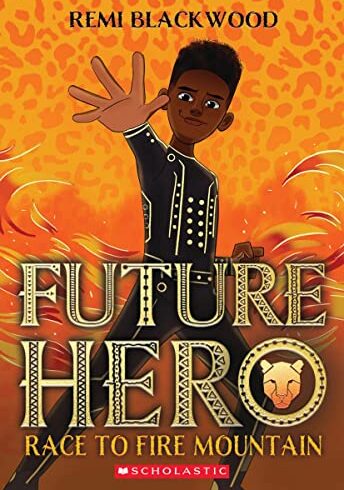
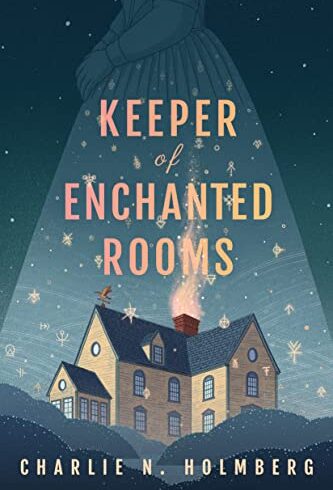



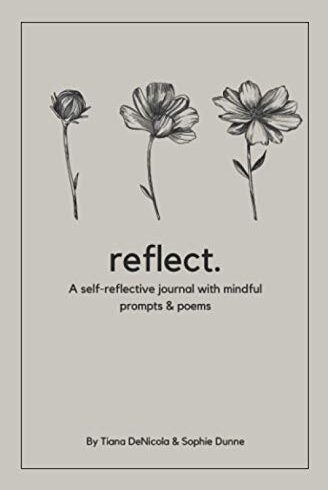

Self-Help Reviewed –
Updated review with additional thoughts and reading recommendations:, Keep in mind that this book is written to address a person who is in the anxious role, so it has a reassuring and quelling tone that may not be relatable for a partner who is using de-activating strategies and shutting down. The unfortunate cost of this tone in the book is also that it inadvertently condones or, at least, doesn’t sufficiently take a stance on abusive behaviors. The book omits a critical perspective on the intersection of attachment patterns and gender. Put simply, while attachment styles themselves aren’t gendered, the strategies available for expressing these styles have a socially determined component. For example, when a male-identified individual who is in an anxious role in a relationship resorts to strategies such as controlling behaviors, name-calling, yelling and demanding, etc, there is a gender violence element here that has a social dimension and needs to be named. Attached takes no stance on this and, in the wrong hands, can be quite harmful for this reason rather than empowering., In my view, the reason for this failure is that Attached treats all anxious-avoidant attachment style mismatches as problematic and doesn’t make a clear distinction between when these patterns are abusive versus when they are a normal part of the differences in a relationship (after all, to some extent, all relationships have some degree of attachment style mismatch). The cost of erasing this distinction is that abusive behaviors aren’t named and, on the flip side, relationships that are salvageable and hopeful are treated as a dead-end that will probably always have problems; the book makes a lackluster note about how to use communication to try to improve an anxious-avoidant relationship but its resounding message is clear: you will probably “always” have these problems and the gold star solution is to find a partner with a “secure” attachment style., As a therapist—and as a therapist who uses attachment theory in my work—I found this overarching message in the book bizarre. There already exists a method of couple’s therapy based on attachment called Emotionally Focused Therapy (EFT) and it has a high success rate helping couples in anxious-avoidant patterns. So, I was quite surprised by the overriding message in Attached about finding a “securely attached” partner as the solution to relationship mismatches. The very premise of attachment-based couple’s therapy from day one is that the problem is not one’s partner–it’s the painful pattern both are stuck in and the pattern can be modified. The communication strategies in Attached fall short of how to address the attachment mismatch because the book is overly focused on helping one leave a relationship and find a “securely” attached partner., If you are in an anxious-avoidant relationship pattern, and want a more hopeful, effective approach, I recommend instead that you try reading Sue Johnson’s “Hold me Tight: Seven Conversations for a Lifetime of Love”. I also recommend reading/watching more about EFT—there is a great YouTube channel by Anabel Bugatti, for example, and many others. When you look for a couple’s therapist, interview them to see if they know about attachment and, if you can, find someone versed in EFT., There is a clear method for helping anxious-avoidant couples and it’s pretty straightforward but there is an order to it: the “avoidant” partner has to be engaged first (in EFT, this step is called “withdrawer re-engagement”), and then the “anxious” partner is able to communicate more clearly and listen with less blame, once they hear a non-defensive version of their “avoidant” partner’s attachment needs (this step is called Blamer Softening in EFT); the cycle is repeated several times until the couple integrates a new, less defensive pattern. Attached, though, flies right in the face of what we know about attachment itself when it recommends to an anxious partner (to whom the book is addressed) that they can try to apply healthy communication strategies to try to improve the relationship. This is probably an impossible emotional feat for someone caught up in the more intense mismatches (fears of abandonment, need for reassurance, etc)— at least not without individual therapy and without couple’s therapy whose interventions are applied in the correct order. There is an interview somewhere online with Sue Johnson where she says that once partners are activated in an argument, they can’t just easily apply communication strategies to calm down (I’ll share it when I find it). That doesn’t mean it’s hopeless or that the solution is to externalize the problem and look for a “securely attached” partner or to become resolved to always having such problems, as the book seems to suggest., That being said, as I mentioned in the beginning, there are times that it’s important to make a distinction between a difficult relationship dance and unacceptable abusive behaviors that warrant leaving. I don’t think Attached is much help with this distinction. In addition to being mum about abusive relationships, the book is also pretty mum about trauma and its impact on relationships. Down-regulating behaviors that look like shutting down and withdrawal can be responses to trauma. There is next to no empathy in Attached toward such down-regulating behaviors and no acknowledgement that they are understandanble and protective responses to trauma triggers. On the other hand, control, name-calling and blame can be expressions of anxious attachment and also signs of abuse and gender violence. Keep in mind, something can be both abusive *and* anxious attachment at the same time. Similarly, something can be both a response to trauma *and* avoidant attachment at the same time. Attachment patterns are a surface presentation—they can be a very useful lens to look through if you and your partner are willing to work through the problems together and look for couple’s counseling. But, there are times when it is also important to name that something more than attachment is at play— abuse, trauma, etc., On this last note, as in my original review, I want to say a little bit about going beyond attachment in order to understand one’s relationship choices better. Attachment patterns are the surface and they don’t speak to underlying dynamics. Attached makes a puzzling and simplistic suggestion that, through conscious intention, you can somehow train yourself to be interested in partners who do not register to you as exciting or familiar. There are issues that cannot be resolved simply by switching partners. For example, if one tends to take on more “anxious” roles in relationships with partners who act more “avoidantly”, there are a host of important questions to understand there that will not be resolved, but repeated (or simply inverted), by switching partners. Growth for a person in such a role could come from owning that connecting to loving/desiring emotions is only possible for them at a distance and working through what that is all about. A person in this role might very well react avoidantly themselves when faced with a partner who is trying to be closer., There is an idea in an approach called Imago Therapy that every individual has an early imprint or working model of what they find attractive based on experiences with those closest to them. Attraction, on this view, comes from finding a partner who at once resembles a familiar trait that felt problematic in a parent/caregiver but also that carries hope of a solution to the problematic trait. For example, if one felt constrained by a controlling parent, a hopeful match for that individual might be a partner who resembles the parent in some way yet who is willing to expand and offer autonomy. What’s crucial is that the person in this basic example does not simply desire autonomy from just any partner—they desire autonomy from someone who they experience as controlling. Both pieces are important— the familiar and the missing quality. On this view, the best chance for growth and contentment comes when partners who are excited by a familiar unconscious bond both own their part of their pattern and agree to the work together, something Attached barely encourages., Unconscious dynamics are something to focus more on in one’s individual therapy— I still think attachment theory, when applied correctly, is the most hopeful lens we have when it comes to couple’s therapy. For anyone struggling in an anxious-avoidant relationship pattern, I highly recommend looking into Emotionally Focused couple’s therapy for a more hopeful and effective approach than in this book. Good luck and thanks for all the comments/questions about my original review!, —– Original review below—-, As a counselor, I give this book to people (most usually women) who are in abusive relationships where their physical and emotional safety is on the line and who need to empower themselves to flee, but I typically do not recommend it to anyone else. One of the main principles of therapy is that, in order to grow, a person first has to locate the problem as internal to the self, i.e. be able to take ownership. This book is in many ways simplistic and misleading in that it seems to confuse maladaptive relationships with abusive ones and reads as though it is helping a victim get out of a trap, reinforcing a lack of ownership that is a prerequisite for any form of personal or relational growth., The deeper issue is that the book, perhaps in an effort to present an oversimplified version of attachment theory to the layperson, does not make it clear that “avoidant”, “secure” and “anxious” are patterns of relating *between people* rather than something that lives within people as an essential identity. These are dimensions, not categories, so people can locate their responses along a continuum on the avoidant and anxious dimensions depending on many contextual and relational factors. It is common, perhaps expected, for relationships to suffer from maladaptive patterns over time (it’s like a car that needs maintenance) and these are fixable when both partners own their piece and do the work. Unfortunately, this book discourages partners who have taken on a more anxious role in a pattern from locating any internal ownership and suggests that if they roam the world and find one of these magical partners called “secures”, all their problems will be resolved. This is not any different than the trite self-help advice we have heard before about finding a partner with x,y,z characteristics as a solution to internal problems, just dressed up in the sexy, recently prominent language of attachment theory. Rather than locating the problem in the pattern and suggesting that changing your relationship to a partner is possible with ownership on both sides, the book suggests that the problem lives in the partner., I have sat with many couples during therapy where one partner has taken on a more anxious strategy and the other a more avoidant strategy. Many of these couples love each other deeply and are able to fix the pattern between them. This book seems to suggest that these roles are somehow essential traits rather than strategies that can be modified, and discourages a focus on fixing the pattern. This book further seems to suggest that the attraction between such partners rests on a confusion of chaotic feelings that come from attachment distress with genuine love, which is very misleading and does not do justice to the meaningful and deep connection partners in this pattern have to each other., EDIT: Many folks in the comments have asked about what books I would recommend instead. I highly recommend books about Emotionally Focused Couple’s therapy– it’s an approach developed by Sue Johnson and it’s based on attachment theory, too. But I find that the application of attachment theory in EFT’s approach isn’t oversimplified the way it is in this book and it offers a lot of hope to couples in anxious-avoidant patterns. EFT has a high success rate working with these dynamics and views them as a normal part of the dance of relationships. If you are struggling in such a pattern, I would recommend Hold Me Tight: Seven Conversations for a Lifetime of Love by Sue Johnson., Another very puzzling and simplistic suggestion in the book is that through conscious intention, you can somehow cause yourself to be interested in partners who do not register to your unconscious mind as exciting or familiar in any way. Every person has an early imprint or working model of what they find attractive and exciting, based on experiences with those closest to them. People who register as boring and unexciting to us do so for an important reason—they are people whose “crazy” does not fit our “crazy” in a way that has the potential to heal us and teach us the most important lessons about ourselves that we need to learn. For example, if one tends to take on anxious roles in relationships with partners who then respond more avoidantly, there are a host of important questions to work through that won’t be resolved, but simply replicated, by switching partners. Such a person, to grow, needs to own that connecting to loving and desiring emotions is only possible for them at a distance, and they need to look inward to figure out what that is all about in order to stop acting in those ways. Could such a person take in affection and care when a partner tries to come close to them, or will such a person in turn react avoidantly themselves? How many times have we seen an anxious person turn avoidant when caring and available partners come their way? In this way, the book fails to address that there are deeper dynamics responsible for attraction that cannot be resolved by switching partners and that “anxious” and “avoidant” are surface presentations of underlying dynamics that need to be worked through to be resolved. For example, if one felt unloved and constrained by a controlling parent, happiness for that individual comes from finding a partner who at once resembles that familiar parent yet who is willing to expand and offer autonomy. What’s crucial is that the person in question does not simply desire autonomy from any random person— they desire autonomy from someone whom they experienced as controlling. And you can bet your life that this individual will keep reenacting this scenario by picking controlling partners and then struggle to twist autonomy out of them. Both pieces are important— the familiar and the missing quality. The best chance for growth and contentment comes when partners who are excited by a familiar unconscious bond both own their part of the pattern and agree to do the work together, something this book barely encourages.
Khaleesi’sHandMaiden –
My psychiatrist pretty much made me order this book even though in my mind I was dead set against, thinking it was going to be a waste of time, perfectly convinced I knew everything about myself and whatever kind of “attached” I was., Whoa., Was I wrong., And I hate to be wrong. Thanks, Dr. D., General Information: This book is an easy read. It’s not that stuff you need to be a rocket-scientist to figure out – in layman terms it briefs you on the broader different styles of attachment: secure, anxious and avoidant. The book helps you determine what kind of attachment styles you have via reading examples of others attachment styles and there are also some quizzes if you’re still not sure, all of which I found useful. I really liked that the authors presented examples of scenarios of attachment styles and encouraged the reader to read through the scenarios and guess the kind of attachment styles that were presented based on the knowledge we had already been given in the earlier part of the book. I find that a helpful way to learn., Given that I was not into reading this in the first place – the fact that it was light reading, interesting and at times fun – made me very attuned to what this book had to say. I agree it wasn’t super in-depth but I don’t fault this book for that because if it was super in depth I would have not even read it. My psychiatrist knows what the heck she is talking about and she choose this book for a reason – so I have zero complaints. I think she was even impressed with how much I was able to take away after reading it in one day., Personal Information:, This book taught me a lot about myself. With women, I have anxious attachments – stemming from an unpredictable childhood. I pretty much tend to gravitate toward any one who acts maternal with me and cling to her. This isn’t necessarily about romantic attachment for me, it spelled out a lot of patterns with all the people I have in my life: from friends, family members, partners and even my doctors., I had started to notice that I was feeling unsettled in my relationship with my fiance. I was getting annoyed at everything he did. Little things, like the way he chewed. I would get annoyed when he would text me and completely ignore him for hours at a time. Until I read this book, I didn’t realize the problem was me and that with men I have a very avoidant attachment style. I was able to take the criticism to heart without feeling persecuted because the book doesn’t make you feel that way even though avoidants can come off as very very harsh and cruel and indifferent., I’m now able to communicate more effectively, recognize my own patterns of behavior, identify that I am responsible for my own actions and feelings and now I feel a real sense of control and independence because I have that knowledge. I have that security. I can reciprocate with my fiance now and not be so dismissive of him and I’m able to be a bit more open without feeling that he’s trying to stop me from being my own person or that he’s suffocating me., I highly recommend this book. If you want to delve super deep into this attachment thing – some other reviewers mentioned additions and alternatives but I wouldn’t. I am a very learned person, a very intelligent person and I didn’t need anything more in depth than this book to help me to start to recognize patterns that needed to change. I think this book is best served to people who can admit where they are on the attachment continuum. I happen to be at a place in my life now, thanks to my psychiatrist and therapist, where I am able to let my guard down a bit and accept things that are difficult for me to accept.. Maybe even just six months ago I wouldn’t have been ready to admit this. But given my ability to be ready and my desire to make things right in my life now that I have a child – I didn’t need a guide book to tell me how to figure out the things I needed to do to fix the areas that needed work in my life regarding my attachment styles., I disagree with the reviews that claim this book doesn’t offer us any insight as to why we are the way we are and what we can do about it. Several times this book mentions the theories of infant and other kinds of attachments but does say that it’s not the purpose of this book to delve into that. That’s good enough for me. I was able to discern from the minimal but powerful examples they give of the attachment styles of infants to their caregivers to know why I am the way I am and I wrote a whole essay about it to share with my psychiatrist…. thanks to this book., As for what we can do about it – this was also something I didn’t need a road map for. This is going to sound pretty darn simplistic but maybe that’s just because it is. Kind of just do the opposite of what you’re doing….???? That is how this has been working for me, anyway. But of course, I relied on the examples in the book to help direct my behavior without needing a “HOW TO” direction stamped across the page. You rely on your intuition. You rely on your knowledge. You rely on your empathy and most of all you rely on your willingness to enact change., The examples in this book were definitely not apples to apples with how I am with my fiance – but it was enough of an eye-opening experience for me to say to myself: “Oh geez….. I do things like this all the time and this is how my fiance must feel. He’s just reacting to my avoidance. If I start to try to be less avoidant and give him a little bit more security by acknowledging him maybe he won’t feel so frustrated or taken advantage of or hurt.”, And that’s what I started to do. I started to recognize the behaviors I have that are avoidant and started to replace them with more healthy behaviors. At first this wasn’t easy. I felt like I was losing a part of myself by giving in to him but then I realized that’s silly and I went back to the book for guidance and reassurance and that’s when I decided to feel more secure and in control. I’m far more independent by making the right, healthy choices for our relationship than I am being a slave to my fear of dependency. I really feel empowered by this and I thank the authors for putting this out there in a way that isn’t complicated but that is so very helpful.